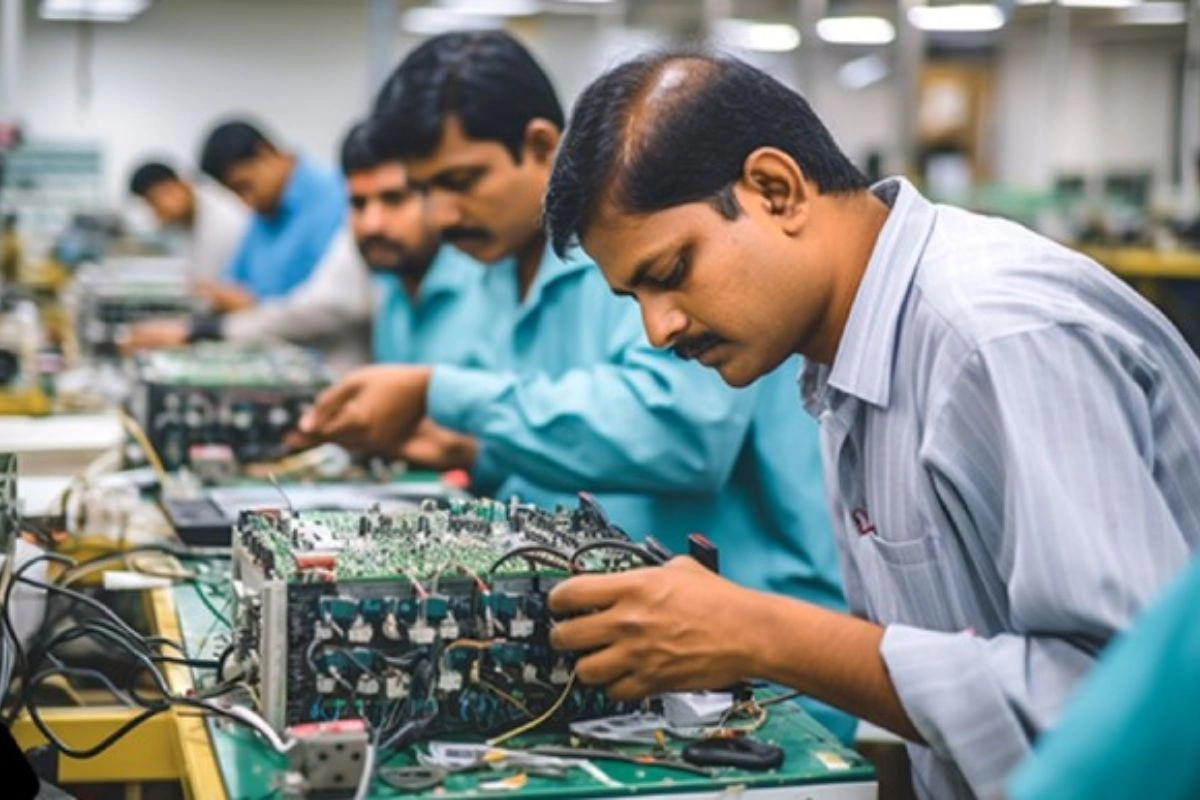
India’s electronics sector is poised for massive growth, with projections indicating the creation of 12 million jobs by 2027, according to a report by TeamLease Degree Apprenticeship.
This includes 3 million direct roles and 9 million indirect positions, showcasing the sector’s potential to significantly boost the country’s economic growth.
Electronics Sector Serves Employment Opportunities
The report highlights that direct employment will span across various technical domains, including nearly 1 million roles for engineers and 2 million positions for ITI-certified professionals. Additionally, 200,000 specialists in high-tech fields such as artificial intelligence (AI), machine learning (ML), and data science will find opportunities in the industry.
Meanwhile, non-technical roles will account for 9 million indirect jobs, emphasizing the sector’s wide-reaching impact on the workforce.
The electronics industry has set an ambitious goal of achieving $500 billion in manufacturing output by 2030. To meet this target, the sector must grow five-fold in the next five years, bridging a $400 billion production gap.
As of now, domestic production is valued at $101 billion, with mobile phones contributing a dominant 43% share, followed by consumer and industrial electronics at 12% each, and electronic components at 11%.
Electronics Sector With Emerging Segments
Emerging sectors such as auto electronics (8%), LED lighting (3%), wearables and wearables (1%), and printed circuit board assemblies (PCBAs) (1%) are expected to drive further growth.
“India’s electronics sector, currently valued at $101 billion, is rapidly positioning itself as a global hub, contributing 3.3% to global manufacturing and 5.3% to India’s total merchandise exports in FY23,” said Sumit Kumar, Chief Strategy Officer at TeamLease Degree Apprenticeship.
Capacity Building And Workforce Development
The report emphasizes the importance of capacity building to meet the growing demand for skilled professionals. With ITIs operating at just 51% enrollment capacity, there is significant room for improvement.
Employers and industries can address this gap by establishing in-house training centres and collaborating with academic institutions through Work-Integrated Learning Programs (WILP) and degree apprenticeships.
Also Read: India’s Venture Capital Activity Sees Significant Growth In 2024
To read more such news, download Bharat Express news apps



















